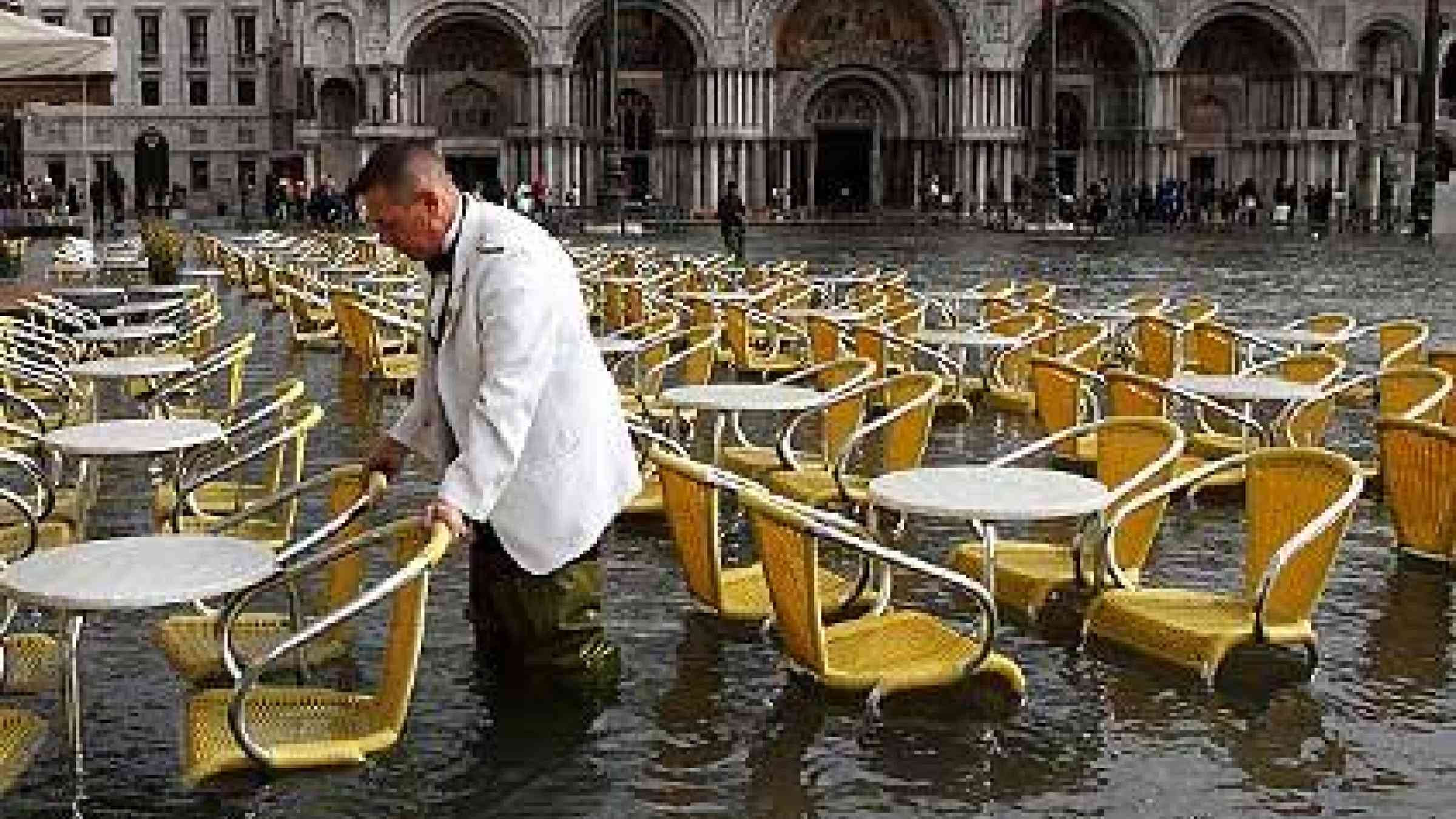US$6.7 billion floodgates to protect Venice in 2014

GENEVA, 21 December - In 2014 Modulo Sperimentale Elettromeccanico, Italy’s biggest public works project which began nine years ago is scheduled to begin reducing the flood risks faced by the population of Venice each year.
Venice stretches across numerous islands in the Venice Lagoon along the Adriatic Sea. At high tide, parts of the city are flooded. Rising sea levels and groundwater pumping are causing the city to sink.
Last month, water reaching levels of 149 cm, the sixth highest level since records began in 1872, filled historic buildings and shops, forcing residents to wade through waist-deep water.
MOSE, (Italian for Moses) as it is called, and whose mechanics allude to the biblical parting of the Red Sea, consists of rows of 78 giant metal flap gates that will rest flat on the seabed until tides rise to a dangerous level. At this point the gates will be blasted full of compressed air and rise up to block the waters.
The US$6.7 billion project will put gates across the three inlets of Lido, Malamocco and Chioggia which connect the Venice Lagoon to the Adriatic Sea and control the ebbs and flows of the tide.
Together with other measures such as coastal reinforcement, the raising of quaysides and paving as well as improvement of the lagoon environment, MOSE will reduce the risks Venice faces from floods and morphological degradation. The marshy Venice Lagoon has deepened over the years and loses some one million cubic metres of sediments annually due to natural events and human actions.
Venice has been looking at ways to address the risk its faces since the Great Flood of 1966 when 5,000 people were displaced and $6 billion worth of artwork was damaged. ‘Acqua alta’ (high tide) is now a state priority and the Italian Ministry of Infrastructure and Transport, the Venice Water Authority and the Consorzio Venezia Nuovo — a group of local engineering firms, are behind the MOSE Project.
According to the Mayor of Venice, Giorgio Orsoni, UNISDR’s first Champion of Urban Resilience in Europe, “The city is tired of waiting for the completion of the MOSE gates, and is asking for more attention from the Government. Funds that are promised have yet to be delivered. Venice, in the interim, cannot proceed any more with urgent programmes of urban maintenance. These days, the city is working with some Members of the Italian Parliament to push for amendments to the Financial Law, which is presently under discussion in Parliament".
“We chose Mayor Orsini as a Champion of Urban Resilience in recognition of his constant efforts to build disaster resilience and protect the cultural heritage of Venice; not only for its population but the whole world. He is constantly looking to engage partners in the search to find solutions to vulnerability”, said Margareta Wahlström, The UN Secretary-General’s Special Representative for Disaster Risk Reduction who heads the UN Office for Disaster Risk Reduction.
The high tides and flooding in November once again demonstrated not only the fragility of Venice, but also that its citizens are capable of coping with such events, and preventing a major disaster, according to Orsoni.
Venetian authorities stated that although city residents were partially prepared for the November floods, the early warning system worked. Sirens sounded along with a correct forecast of more than 140 cm of water and SMS frequently updated the forecast. In light of such an extreme event, it was not possible to avoid direct damages, presently estimated at EUR three million. There was, however, no interruption of energy, water and gas services.
And as one media commentator noted recently following super storm Sandy’s assault on the parts of the Caribbean and the eastern seaboard of the United States, “The perils of Venice are real; this treasury of civilization does need protecting. But it is not all bad news. Or rather, as the news gets worse for the entire planet, Venice has some lessons to teach about how to live with the sea, in what the Most Serene Republic always boasted was a happy marriage.”
In 2011, Venice was chosen as a role model city for cultural heritage protection by the UN Office for Disaster Risk Reduction (UNISDR), which has run the Making Cities Resilient World Disaster Reduction campaign since 2010 to draw attention to the dangers of poor development planning and unplanned urbanization. To date the Campaign has 1,289 member cities from around the world, including Venice.